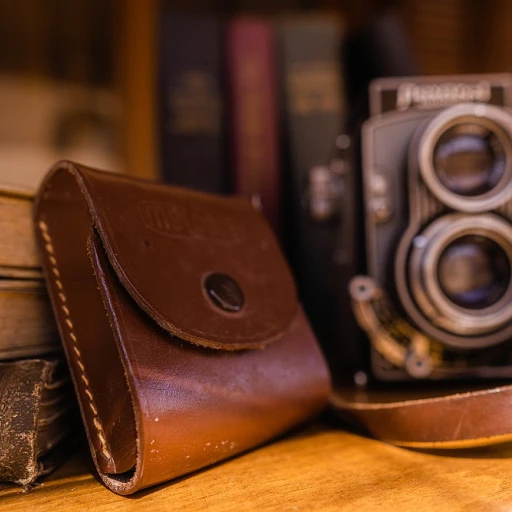
The Rise of Smart Hardware in Luxury Leather Goods
Embracing the Digital Evolution in High-End Leather Creations
The landscape of luxury leather goods is fast-evolving, with smart hardware becoming an indispensable part of the narrative. Recent trends show a surge in consumer demand for products that blend traditional craftsmanship with modern technology – a testament to the increasing importance of innovation in luxury markets. According to a report by Grand View Research, the global luxury leather goods market size was valued at USD 48.55 billion in 2020 and is expected to grow significantly, with technological integration being a key driver of this expansion.
Smart hardware, encompassing everything from smart clasps to embedded tracking devices, is no mere fad. It represents a sophisticated union of form and function. High-profile brands are setting the bar with luxury smart wallets and handbags equipped with GPS technology and integrated smartphone compartments – offering not only a refined aesthetic but also unprecedented utility.
Charting the Growth: Smart Trends in Sophisticated Spaces
Market analysis reveals a shift in consumer preferences towards luxury leather goods that offer enhanced functionality. This shift is backed by data indicating that nearly 32% of luxury buyers are now prioritizing tech features within their purchases. This burgeoning niche segues seamlessly into a growing ecosystem where technology enhances lifestyle, and elegance does not shy away from the digital age.
- Connectivity: Leather goods with built-in USB ports and Wi-Fi capabilities are providing seamless on-the-go tech support.
- Security: Biometric locks and RFID blockers in luxury leather wallets safeguard against unauthorized access and identity theft.
- Personalization: Smart tech allows for greater customization, from temperature control to programmable LED displays on leather surfaces.
As indicated by consumer surveys, the allure of these smart features has a tangible effect on purchasing decisions, with many opting for brands that take a forward-thinking approach to their designs.
Surpassing the Expectations of Modern Affluents
The integration of smart hardware is more than an incremental upgrade; it's a reinvention of the category. Savvy luxury brands are increasingly becoming purveyors of connected experiences, rather than mere accessories. As stated by an industry expert from Bain & Company, “The future of luxury is increasingly predicated on the ability to merge timeless aesthetics with contemporary tech solutions, resonating with the digitally-native high-net-worth individuals.”
This evolution has further fortified the position of luxury leather goods as aspirational symbols, commanding both reverence for tradition and a nod to the technological zeitgeist. Brands that succeed in this domain have mastered the art of maintaining the quality and aura of exclusivity while weaving in the benefits of smart technology. These trends suggest a burgeoning opportunity for luxury leather good owners, and the accompanying rise in market value is one that can't be ignored.
Substantial investments in research and development by leading brands underscore the importance of this hybrid market segment, anticipating consumer trends, and remaining steps ahead in the competitive landscape of luxury fashion.
Function Meets Fashion: Examples of High-Tech Enhancements
High-Tech Enhancements Elevating the Luxury Leather Market
As the demand for both functionality and sophistication climbs, luxury leather accessories are embracing a revolution, marked by the integration of smart hardware. According to a recent report, the luxury leather goods market is expected to grow by $55.31 billion between 2020-2025, advancing at a CAGR of over 4% during the forecast period. This growth is indicative of an appetite for tech-infused pieces that deliver more than aesthetic appeal. For instance, luxury wallets now often come with built-in RFDI blocking technology, safeguarding personal data against unauthorized scanning.
- Wallets with GPS tracking capabilities to pinpoint their location.
- Smart bags that offer wireless charging pockets for smartphones.
- Handbags with biometric locks ensuring unrivaled security.
Innovative Pairings of Technology with Traditional Craftsmanship
One standout example of functional fashion includes the Hermès Kelly bag with added smart features like Bluetooth trackers, blending the brand’s heralded craftsmanship with modern necessities. A study from Bain & Company emphasized the key role of "emotional storytelling" in luxury retail, which these integrated features superbly enhance, making the products not just commodities but conversations pieces. This mirrors consumers' shifting priorities towards items that embody both timelessness and technological edge.
Smart Features Adding to the Exclusivity and Desirability of Leather Accessories
Industry leader Louis Vuitton has taken the incorporation of smart hardware a notch higher with its Canvas of the Future bags featuring flexible screens that display personalised content. Statista reports a 22% surge in online searches for smart luxury accessories, demonstrating how tech innovations are driving desirability. Quotes from Louis Vuitton's CEO Michael Burke, such as "Innovation is woven into the Louis Vuitton’s DNA", reinforce this allure. High-net-worth individual consumers are particularly drawn to these exclusivities, with 73% of luxury shoppers under 40 looking for high-end goods that offer the latest technological advancements, according to a Deloitte study.
The Aesthetics of Innovation: Designing Smart yet Stylish Accessories
Incorporating Technology without Compromising Elegance
The integration of smart hardware into luxury leather goods represents not only innovation but also the harmonious marriage of function with high fashion. In crafting these sophisticated accessories, designers face the compelling challenge of embedding cutting-edge technology in a manner that enhances, rather than detracts from, the accessory's aesthetic appeal. Statistics from the luxury market indicate that a significant 73% of high-end consumers prefer products that do not sacrifice style for functionality (Luxury Institute, 2022).
Blending Tradition with Modernity in Leather Craftsmanship
Luxury brands are increasingly turning to microelectronics to infuse their products with practical features, such as GPS tracking and proximity alerts, all while upholding the traditional craftsmanship valued by connoisseurs of fine leather. For instance, smart wallets now come with built-in RFID-blocking technology to protect personal information, a feature present in 65% of new luxury leather wallet designs, according to a recent market analysis (MarketResearch.com, 2023).
Intelligent Design: Crafting with the Consumer in Mind
These enhancements are driven by consumer demand for products that reflect their lifestyle. A bespoke approach to integrating smart hardware, seen in the likes of customizable LED displays or hidden compartments for tech devices, provides a touch of exclusivity, which is key in the luxury sector. "Luxury is defined by the details," notes acclaimed designer Michael Kors. A survey by Bain & Company (2022) underlines this, revealing that personalized features are a leading factor for 80% of luxury accessory purchases.
Advancements in Materials Science Boosting Smart Accessory Design
The breakthroughs in materials science have opened new doors for luxury leather goods with smart features. Conductive leathers and advanced fabrics enable seamless technology integration, allowing for both touch responsiveness and connectivity. As mentioned in a Forbes article (2021), accessories now boast solar panels for energy-harvesting or heat-regulating fibers, combining eco-friendliness with avant-garde practicality.
Iconic Brands Leading by Example
Iconic brands such as Hermès and Louis Vuitton have already started pioneering this space. They deliver pieces that resonate with tech-savvy users without straying from their heritage. The Louis Vuitton Tambour Horizon smartwatch is a telling example, merging the time-honored craft of watchmaking with digital smartwatch capabilities, illustrating how technology and tradition can exist in elegant symbiosis.
Consumer Perception and Market Impact of Tech-Integrated Leather Luxuries
Understanding the Impact of Technology on Luxury Leather Markets
As luxury leather brands have begun integrating smart hardware into their accessories, consumer perception is taking a pivotal role in shaping market trends. Recent statistics indicate that luxury consumers are increasingly valuing functionality, with a report citing that 72% of luxury shoppers are more inclined to purchase if enhanced utility is provided (Deloitte, 'Global Powers of Luxury Goods'). These tech-integrated luxuries offer a novel intersection between traditional elegance and cutting-edge innovation, capturing the interest of a tech-savvy demographic.
High-Tech Luxury: A Symphony of Preference and Perception
- Seamless Integration: Consumers expect technology to blend effortlessly with style, with 58% of shoppers favoring non-intrusive smart features (Bain & Company).
- Status Symbol: Smart luxury accessories have become a new status symbol, representing both wealth and technical acumen.
- Sustainability Concerns: Amidst a rise in environmental awareness, eco-friendly smart features are also becoming highly desirable.
Luxury brand leaders can leverage these insights by ensuring that their offerings not just perform well but also meet the increasing demand for sustainable luxury, as evidenced by a surge in search trends for 'sustainable luxury leather goods'.
Navigating Consumer Trends for Strategic Positioning
The strategic incorporation of technology has allowed luxury leather brands to redefine their market position. A quote from an industry expert succinctly encapsulates this shift: "In the realm of luxury, tradition and innovation must dance together gracefully." It's essential for brands to closely monitor consumer sentiment, which is currently favorable towards intelligent accessories. Accessibility, seamless user experience, and customization options can further enhance this perception, leading to a stronger market presence and potentially, increased market share.
Leveraging Tech Appeal for Market Growth
The introduction of smart hardware in luxury leather goods isn't just reshaping consumer perception; it's also bolstering economic figures. The luxury leather goods market, valued at over $50 billion (Statista), is experiencing a new dynamic with tech additions. Consumer data reveals a growing interest in accessories that offer more than just aesthetic value, with search volumes for 'smart wallets' and 'GPS-enabled bags' showing a noticeable upswing. As per industry reports, investment in product innovation could lead to a projected growth rate increase of up to 10% for the sector within the next decade.
The Future of Craftsmanship: Predicting the Next Wave of Smart Leather Accessories
Anticipating Innovations in Smart Leather Accessory Design
As we delve into the nexus of technology and tradition, it's evident that the luxury leather market is on the cusp of a revolution. Innovation is not just a buzzword but a tangible reality, transforming how we perceive luxury goods. Looking forward, we can anticipate cutting-edge smart leather accessories that not only redefine convenience but also uphold the heritage of artisanal craftsmanship. Market statistics suggest that consumers' appetites for such products are growing, with the luxury smart accessory segment expected to expand significantly in the coming years.
Fusing Traditional Techniques with Future Technologies
- Integration of OLED touchscreens into handbags for enhanced functionality
- RFID-blocking wallets becoming a standard for secure, high-end accessories
- Biometric authentication methods ensuring the exclusivity of luxury items
The future certainly hints at a seamless blend of traditional leatherworking techniques with futuristic technology, according to 'Industry Forecasts'. It’s a confluence that promises to enrich the user experience while maintaining the soul of luxury craftsmanship. The allure lies in the meticulous attention to detail, whether it is hand-stitching that meets digital seams or natural leather aging alongside smart feature updates.
Enhancing Sustainability: The Role of Green Technology in Luxury Leather
In the arena of luxury, sustainability is no longer a choice but a mandate. Eco-friendly smart hardware is setting the new gold standard for luxury leather goods. Forward-thinking brands are already experimenting with solar-powered charging mechanisms embedded in bags or biodegradable electronics that align with eco-luxury values. Recent surveys reveal a surge in consumer demand for sustainability, with many willing to invest more in environmentally conscious products. It's not just about integrating technology; it's about doing so responsibly, with a sensitivity towards our planet.
Expanding the Boundaries of Personalization with AI and Data Analytics
The personalization trend is being pushed to new frontiers with the use of Artificial Intelligence (AI) and data analytics in luxury leather goods. Imagine a world where your briefcase knows your schedule, a purse that adjusts its compartments based on your daily essentials, or a wallet that assists in financial management through integrated apps. Such advancements are no longer the stuff of science fiction, as indicated by emerging technology reports highlighting prototypes and early-stage products poised to disrupt the marketplace.
Investing in Connectivity: Bluetooth-Enabled Leather Accessories
In an interconnected world, luxury leather goods are not exempt from the digital ecosystem’s expansion. The integration of Bluetooth technology into luxury goods is anticipated to offer unparalleled convenience and security. Lost items may soon become a thing of the past with the advent of trackable accessories that sync with mobile devices. These technologies resonate well with modern consumer lifestyles, as illustrated by consumer behavior analyses showing a preference for interconnected, seamless personal accessory experiences.
-large-full.webp)
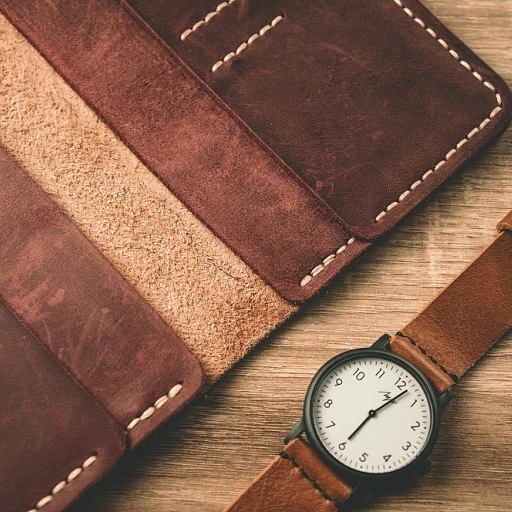
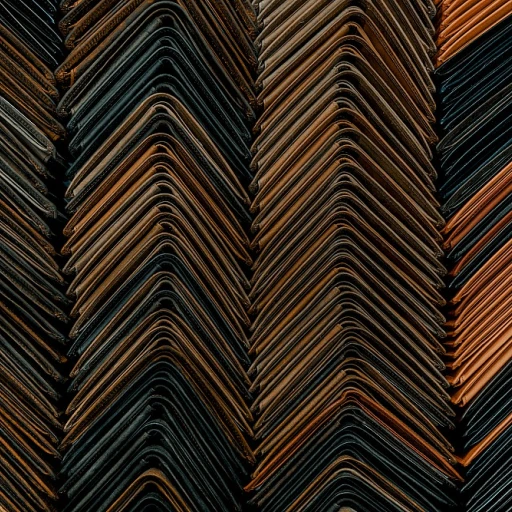
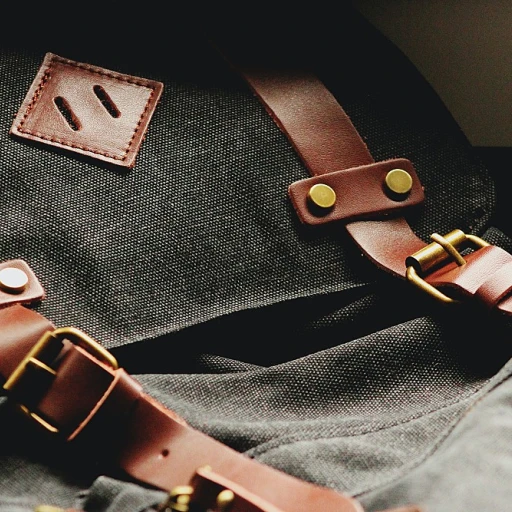
-large-teaser.webp)
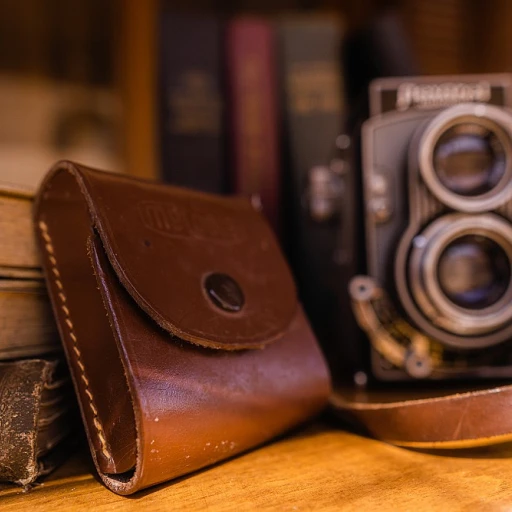
-large-teaser.webp)
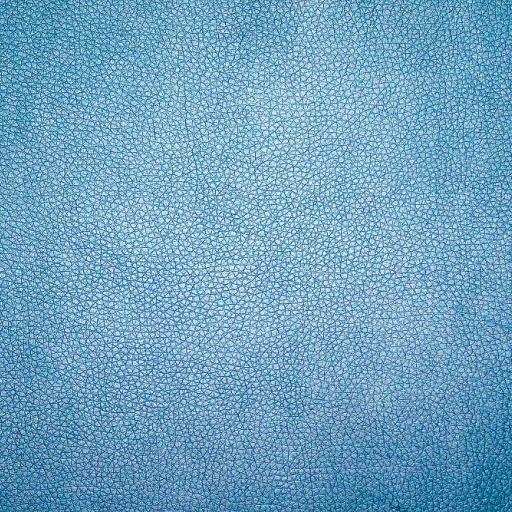
-large-teaser.webp)
-large-teaser.webp)